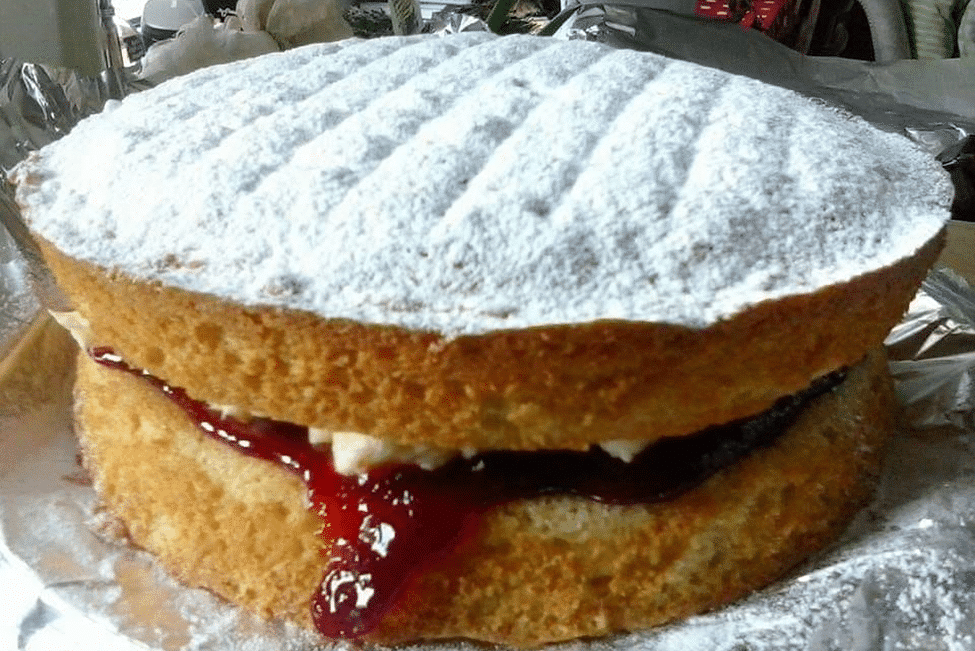Victoria Sponge Cake is a recipe developed by contributor Hayley Edwards. She is an accomplished chef who launched “Roving Chef” in 2008, first catering large director’s lunches, catering dinner parties and baking and selling cakes to the public. Hayley has always believed that anyone can learn to cook and this led her to begin teaching people the skill of cooking in their own home; what “Roving Chef” is today. Roving Chef London also sells various cakes, jams and marmalades to several cafés and privately in central and East London.
A staple in traditional English Afternoon Tea, The Victoria Sponge Cake may have been named for Queen Victoria.
“Sponge cakes, leavened with beaten eggs, originated during the Renaissance, possibly in Spain. The sponge cake is thought to be one of the first of the non-yeasted cakes. The Victorian creation of baking powder by English food manufacturer Alfred Bird in 1843 allowed the addition of butter to the traditional sponge recipe, resulting in the creation of the Victoria sponge. Although sponge cake is usually made without butter, its flavor is often enhanced with buttercream, pastry cream or other types of fillings and frostings. Sponge soaks up flavors from fresh fruits, fillings and custard sauces.”–Wikipedia
Ingredients
- •Oil or nonstick spray, for baking pans
- •250 grams (9 ounces) unsalted butter
- •250 grams (1 1/4 cups) granulated sugar
- •4 medium eggs
- •250 grams (1 1/4 cups) self-rising flour
- •Raspberry jam
- •Confectioner's (Icing) sugar


Preparation
- Pre-heat oven to 180°C (350°F). Lightly oil or spray two round 20 cm (9 inch) baking pans, and line with parchment paper.
In a mixing bowl, cream together butter and sugar. Add the eggs, and beat until blended; the mixture may look a little curdled. Fold in the flour. Divide the mixture equally between the two pans. Bake until a kinfe inserted into the center comes out clean, about 30 minutes.
Gently remove the cakes from the pans and allow to thoroughly cool.
Sandwich together with the jam and dust the top with confectioner’s sugar.

